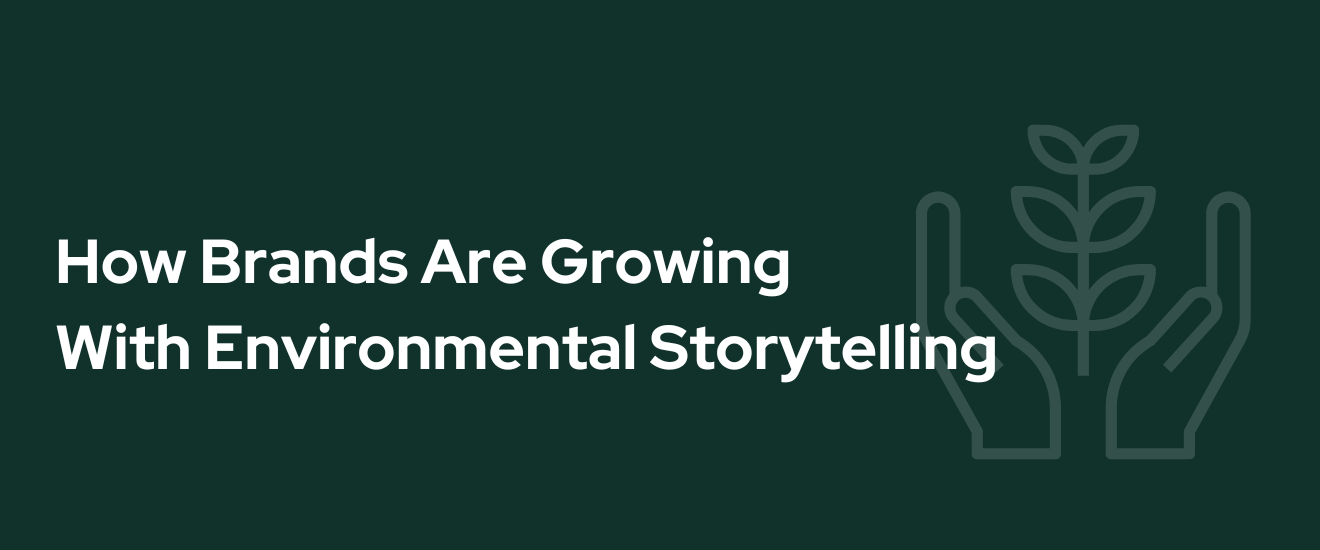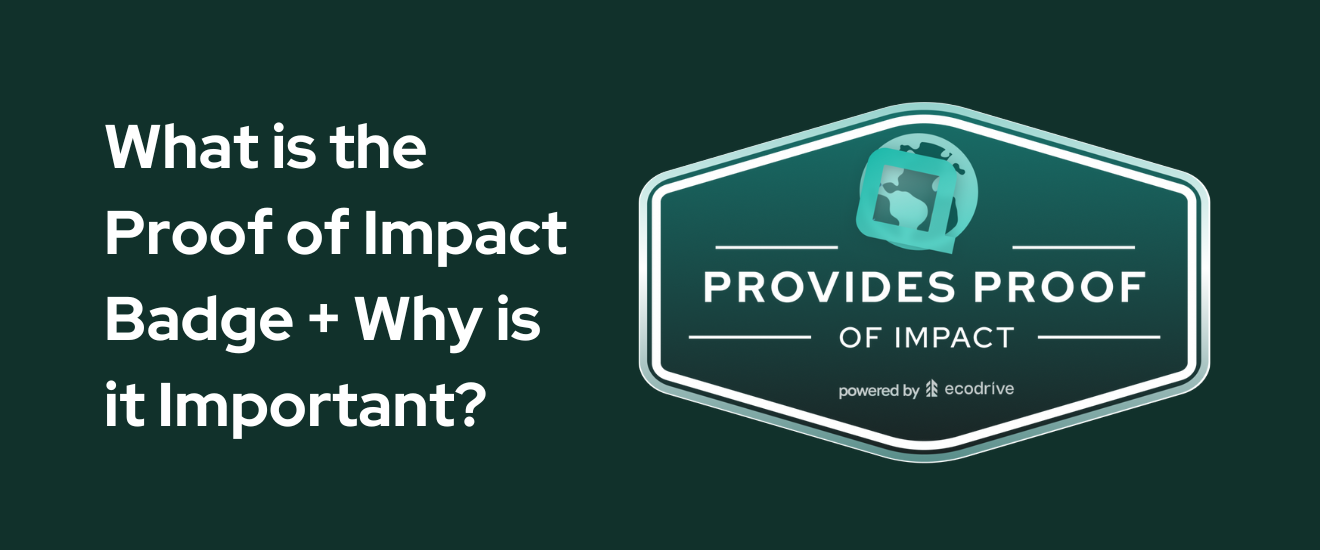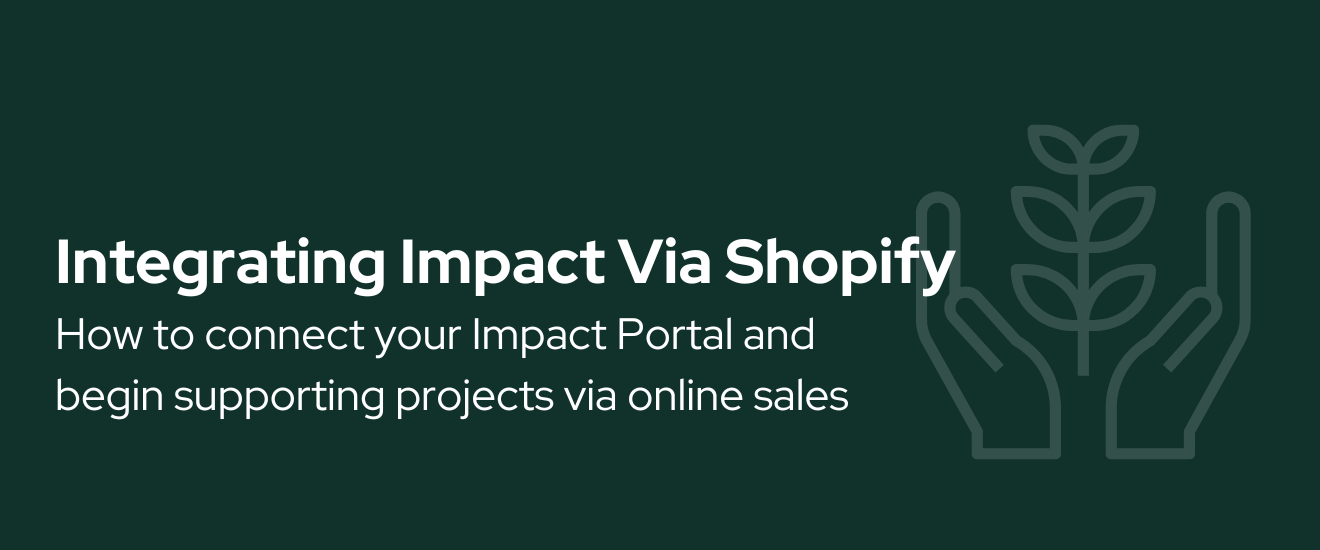How Brands Are Growing With Environmental Storytelling
6 actionable steps for improving your sustainability comms and creating connection with customers
Environmental storytelling is a key strategy for purpose-driven businesses.
When used effectively, it not only builds trust but also drives growth by helping customers connect emotionally to a brand’s mission. In an increasingly competitive landscape, companies that tell clear, evidence-backed stories about their sustainability efforts are seeing higher engagement, stronger loyalty, and measurable business results.
Below, we explore how specific brands are using environmental storytelling to accelerate growth and share strategies your business can apply right away.
1. Reframing the Product as Part of a Mission
Modern customers want more than a good product — they want to support brands that align with their values.
According to a 2023 report from Deloitte, 66% of consumers say they’re more likely to buy from companies that reflect their personal beliefs. Environmental storytelling helps companies move beyond product features and present the entire business as part of a broader mission.
Take Seatopia, for example.
This seafood subscription company offers sustainable, traceable seafood — but the storytelling doesn’t stop at sourcing.
Seatopia shows customers how each purchase helps restore ocean ecosystems through verified kelp planting projects in Canada, powered by a partnership with Ecodrive. Their messaging frames every order as part of a regenerative solution to ocean degradation and climate change.
This narrative shifts the value proposition from “get high-quality seafood” to “support a regenerative seafood movement,” increasing emotional engagement and brand loyalty.
2. Supporting Claims With Verified Data
Environmental storytelling without proof can quickly fall flat.
In a landscape where greenwashing is increasingly scrutinized, customers are seeking accountability.
A 2022 study by NielsenIQ found that 77% of consumers say it’s either very or extremely important that companies are transparent about their environmental claims. That’s where verified impact comes in.
Brands working with platforms like Ecodrive are able to offer traceable data — for example, photos of trees planted, details on pounds of plastic removed, or geotags for hectares of kelp restored.
These outcomes are backed by on-the-ground project partners and updated in real time.
This type of verification transforms marketing into something measurable. Instead of vague promises, companies can point to a map showing where their customers’ contributions are making a difference.
It builds trust and gives customers the confidence to support a brand long-term.
3. Using Visual Media to Drive Connection
Data is powerful, but it’s not always memorable.
Research from MIT shows that people remember 80% of what they see and do, compared to only 20% of what they read.
That’s why environmental storytelling that incorporates video, photography, and infographics tends to perform better — especially on platforms like Instagram, YouTube, or TikTok.
Brands like Kodiak Cakes use photography and media to walk users through their product lifecycle.
They show where materials are sourced, how emissions are tracked, and what steps they’re taking to reduce their carbon footprint. The visuals simplify complex information and help customers understand the brand’s commitment in a tangible way.
Ecodrive partners provide access to verified project photography — such as tree planting in Kenya or ocean cleanups in Bali — which brands can use across digital channels.
This content turns abstract sustainability metrics into real-world, human-centered stories.
4. Making the Customer Central to the Story
Great storytelling doesn’t just showcase a company’s efforts. It positions the customer as the hero.
Harvard Business Review research suggests that people are more emotionally invested in stories when they can see themselves reflected in the journey.
Ecodrive partner brands often frame impact using language like: “Your order planted a tree” or “Thanks to you, we’ve removed 5,000 pounds of plastic from the ocean this month.” This approach personalizes the mission and builds emotional ownership.
It also boosts engagement.
E-commerce brands that send post-purchase impact emails, for example, often see higher repeat purchase rates and more positive reviews.
By celebrating the customer’s role in the environmental story, brands turn a transaction into a partnership.
5. Creating Ongoing Narratives, Not One-Off Campaigns
Consistency is a major factor in effective environmental storytelling.
While seasonal campaigns like Earth Month or Plastic Free July offer great opportunities to highlight impact, the brands that see the strongest results weave sustainability into their communications year-round.
Reformation, for instance, releases quarterly sustainability updates and shares their environmental performance openly across email, web, and social.
This continuous storytelling builds credibility and encourages long-term engagement.
Brands working with Ecodrive often use dynamic impact counters on their homepage or run monthly updates on cumulative contributions. These updates act as ongoing chapters in a longer story, keeping customers involved and informed.
Over time, this builds a deeper connection between the brand and its audience.
6. Turning Environmental Stories Into Business Growth
The return on investment for environmental storytelling is clear.
According to a 2023 Nielsen study, products with credible sustainability claims outperformed conventional products by 16% in dollar sales over a two-year period. Storytelling helps turn those claims into an experience customers can feel proud of.
Ecodrive partner brands regularly report increased conversion rates, higher email open rates, and improved customer satisfaction when they highlight verified environmental impact.
Campaigns built around real-world impact — like “Leave a Review, Plant a Tree” or “Every Order Cleans the Ocean” — help build momentum and generate word-of-mouth referrals.
Final Thoughts
Environmental storytelling works best when it’s grounded in truth, backed by data, and centered on the customer.
It’s not about telling people how great your brand is. It’s about showing them what they’re helping to achieve — and why it matters.
By weaving your sustainability efforts into your everyday communications and using visuals, verification, and consistency, you can turn impact into one of your strongest growth levers.












